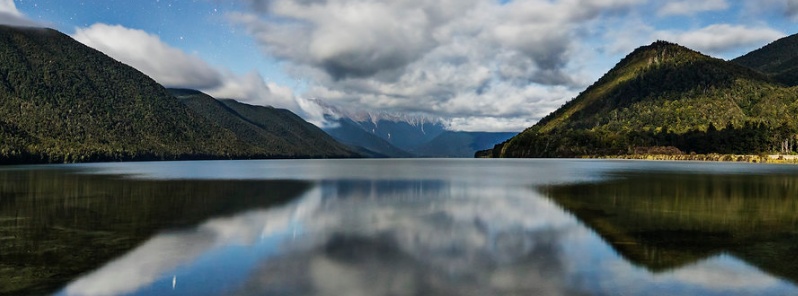Pesticides banned in Europe found in New Zealand streams, study shows

Banned pesticides in several European countries were found in New Zealand waterways and agricultural streams, according to a study by a team from the University of Otago.
The study was led by Associate Professor Christoph Matthaei from the University of Otago's Department of Zoology, and Associate Professor Kimberly Hageman from Utah State University, formerly Department of Chemistry, University of Otago.
The researchers discovered six different pesticides at a single area after they studied 36 agricultural streams in Canterbury, Otago, Southland, and Waikato.
Two or more banned chemicals were also found at 75% of the areas, while four or more chemicals at 40%. All chemicals are still being used in the country.
Matthaei noted that although New Zealand conducts operations to monitor pesticides in waterways, they know little about pesticides in surface waters.
"This lack of knowledge on the distribution of pesticides and their concentrations in our waterways needs to be addressed. Not only are our freshwater fish species at risk, but so too are the animals they eat; aquatic insects such as mayflies and other invertebrates. We know from many overseas studies that these chemicals are detrimental to the entire freshwater ecosystem in the concentrations they're being found in these countries. But relatively few New Zealanders are aware of this," he stated.
Among the seven pesticides collected in waterways, the most common was chlorpyrifos which takes up 86% of the streams examined. The said chemical is illegal in eight European countries and in some residential sites in the United States and New Zealand.
"It's daunting to think that if we test more we might well find more pesticides, as it has been the case in most European countries, but by better understanding the problem we have a greater chance of reducing it," Matthaei added.
Reference
"Current-use pesticides in New Zealand streams: Comparing results from grab samples and three types of passive samplers" – Kimberly J. Hageman et al. – Environmental Pollution(2019) – DOI: 10.1016/j.envpol.2019.112973
Abstract
New Zealand uses more than a ton of pesticides each year; many of these are mobile, relatively persistent, and can make their way into waterways. While considerable effort goes into monitoring nutrients in agricultural streams and programs exist to monitor pesticides in groundwater, very little is known about pesticide detection frequencies, concentrations, or their potential impacts in New Zealand streams. We used the ‘Polar Organic Chemical Integrative Sampler’ (POCIS) approach and grab water sampling to survey pesticide concentrations in 36 agricultural streams in Waikato, Canterbury, Otago and Southland during a period of stable stream flows in Austral summer 2017/18. We employed a new approach for calculating site-specific POCIS sampling rates. We also tested two novel passive samplers designed to reduce the effects of hydrodynamic conditions on sampling rates: the ‘Organic-Diffusive Gradients in Thin Films’ (o-DGT) aquatic passive sampler and microporous polyethylene tubes (MPTs) filled with Strata-X sorbent. Multiple pesticides were found at most sites; two or more were detected at 78% of sites, three or more at 69% of sites, and four or more at 39% of sites. Chlorpyrifos concentrations were the highest, with a maximum concentration of 180 ng/L. Concentrations of the other pesticides were generally below 20 ng/L. Mean concentrations of individual pesticides were not correlated with in-stream nutrient concentrations. The majority of pesticides were detected most frequently in POCIS, presumably due to its higher sampling rate and the relatively low concentrations of these pesticides. In contrast, chlorpyrifos was most frequently detected in grab samples. Chlorpyrifos concentrations at two sites were above the 21-day chronic ‘No Observable Effect Concentration’ (NOEC) values for fish and another two sites had concentrations greater than 50% of the NOEC. Otherwise, concentrations were well-below NOEC values, but close to the New Zealand Environmental Exposure Limits in several cases.
Featured image credit: Paul Stewart

I am 100% sure that further tests will find evidence that the universely banned chemical warfare toxin 1080 is responsible for destroying much of our insects and hence our native birds
Wtf..why r people not commenting on this..its an outrage. Needs to stop. Govt=lies and dirty, filthy tactics
And its no wonder you dont see NZ pure or too much of the “look @ us, we’re so green. Total perversion of justice what every day kiwis will turn an ignorant eye to. Myopia is NZ